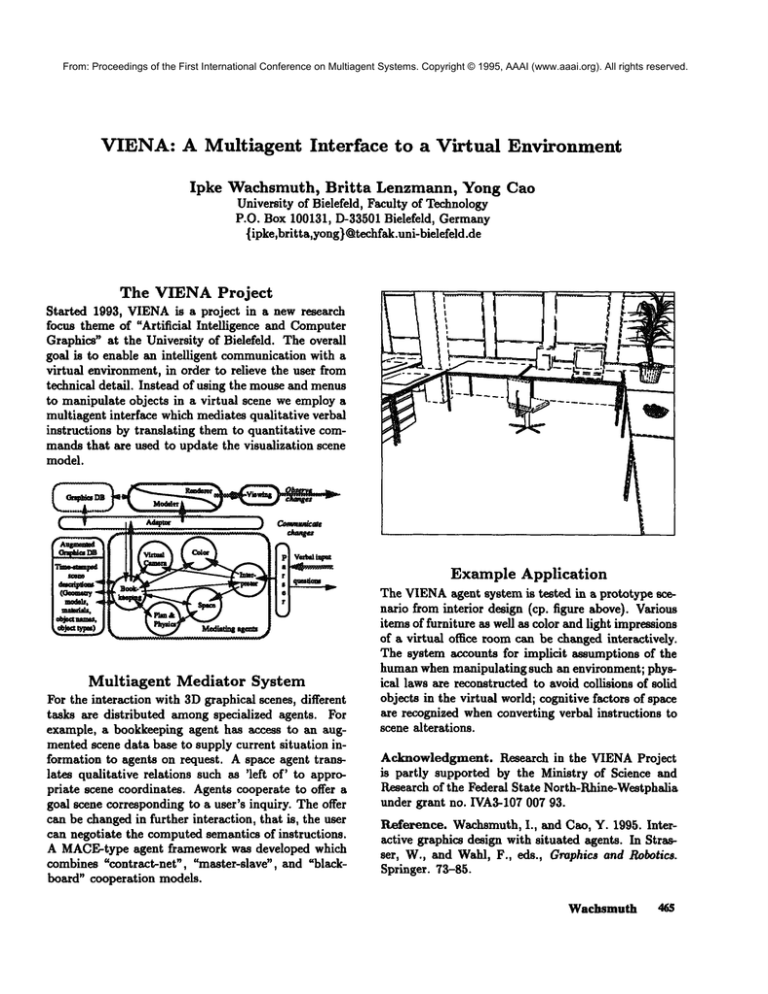
From: Proceedings of the First International Conference on Multiagent Systems. Copyright © 1995, AAAI (www.aaai.org). All rights reserved.
VIENA: A Multiagent
Interface
Ipke Wachsmuth, Britta
to a Virtual
Environment
Lenzmann, Yong Cao
University of Bielefeld, Faculty of Technology
P.O. Box 100131, D-33501 Bielefeld, Germany
~ipke,brit ta,yong)@techfak.uni-bielefeld .de
The VIENA Project
Started 1993, VIENAis a project in a new research
focus theme of "Artificial Intelligence and Computer
Graphics" at the University of Bielefeld. The overall
goal is to enable an intelligent communication with a
virtual environment, in order to relieve the user from
technical detail. Instead of using the mouse and menus
to manipulate objects in a virtual scene we employ a
multiagent interface which mediates qualitative verbal
instructions by translating them to quantitative commands that are used to update the visualization scene
model.
( v - ~ ,,,~,..~x,..
)
Co~ws/c~e
Example Application
(Oeema7
Imli~Jfb 4
sWmlak.
,~aamu.
.
: ¯
Multiagent Mediator System
For the interaction with 3D graphical scenes, different
tasks are distributed among specialized agents. For
example, a bookkeeping agent has access to an augmented scene data base to supply current situation information to agents on request. A space agent translates qualitative relations such as ’left of’ to appropriate scene coordinates. Agents cooperate to offer a
goal scene corresponding to a user’s inquiry. The offer
can be changed in further interaction, that is, the user
can negotiate the computed semantics of instructions.
A MACE-type agent framework was developed which
combines "contract-net", "master-slave", and ~blackboard" cooperation models.
The VIENAagent system is tested in a prototype scenario from interior design (cp. figure above). Various
items of furniture as well as color and light impressions
of a virtual office room can be changed interactively.
The system accounts for implicit assumptions of the
human when manipulating such an environment; physical laws are reconstructed to avoid collisions of solid
objects in the virtual world; cognitive factors of space
are recognized when converting verbal instructions to
scene alterations.
Acknowledgment. Research in the VIENAProject
is partly supported by the Ministry of Science and
Research of the Federal State North-Rhine-Westphalia
under grant no. IVA3-10? 007 93.
Reference. Wachsmuth, I., and Cao, Y. 1995. Interactive graphics design with situated agents. In Strasser, W., and Wahl, F., eds., Graphics and Robotics.
Springer. 73-85.
Wachsmuth
465






